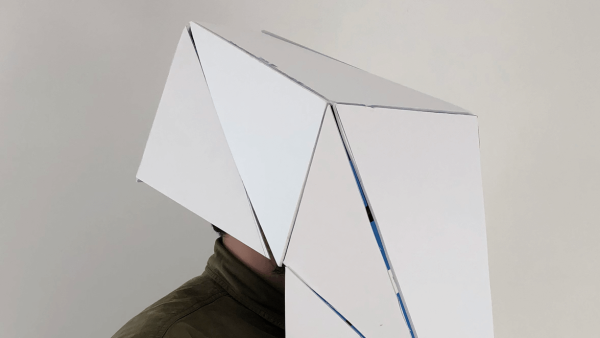Exploring the final frontiers of design

It didn’t take long for the naysayers to start predicting the demise of virtual reality with headlines like ‘game over for VR’ and, after spotting his first VR Oculus in a charity shop recently, Co-Founder and CCO of Moving Brands, Jim Bull, was moved to think that good design will be VR’s saviour.
“As a symbol, that struck me. It tells me that VR hasn’t yet managed to be adopted at the level it aspires to – to be a ubiquitous, in-every-home technology. But, it’s not the technology itself that has a problem, it’s the experiences and applications that have been created for it that have fallen short of becoming part of people’s daily lives.
“VR has amazing possibilities, and alongside augmented reality (AR) and other forms of mixed reality (MR) it gets exponentially stronger – a new approach to creating experiences needs to be found,” says Bull.

He believes designers need to push harder into these technologies and create a new design vernacular. “To push harder and work out how good design can help virtual, augmented and mixed reality to become real and ubiquitous for more people,” say Bull.
The Oculus headset in a charity shop doesn’t represent the ‘death’ of the technology, it’s more about the lack of originality, creativity, and innovation in the use of the technology.
“Designers need to celebrate the death of the rectangle and create a new world of good design.
“Look, the fundamentals of good storytelling and communication don’t change, but we need to make more of the different ways we have to make those stories come to life. We don’t have to be in in this rectangular screen format to be able to design well,” says Bull.
“At the moment we have this sea of sameness. The 1980s, the 1990s, they all have their ‘look’. I’m not a fan of the ‘look’ there is now; a lot of product design is coming from the same place – the same typography, same language, things in the same place... we’re not pushing to be different.”

Bull says designers are still thinking a lot about borders, and edges and corners, and the composition within a rectangle. “If that all disappears, what will we do? What are the new ways we need to think about that?”
If you look at where Bull came from, you can easily see that he’s been resisting ‘box-like’ thinking for quite some time. For one, he was born on the Isle of Wight, where a lot of the United Kingdom’s weed comes from – “because they have lax borders”. And he didn’t go the structured job route after graduating Central Saint Martins College of Art and Design in London.
“We graduated in 1997 and started our own business in 1998 because everything seemed so siloed at the time. Advertising agencies did advertising, brands agencies did branding and the early digital agencies only did digital – no one was mixing it up,” says Bull.
“We wanted to create a place that not only did brilliant design but also great communications work, brilliant digital experiences and made films – a creative business that could do anything. We felt we could be a lot broader, incorporating newer ways of being creative by using motion and interactivity and technology to help bring brand experiences to life.”
His interest in exploring new ways to bring brands to life doesn't mean he eschews the old ways though. “We have a studio where one person prototyping an AR game is in the same room as someone designing a hand-drawn logo.
“I don’t know that there is anyone unique thing you can do to stand out. It’s all important. The thing is to be collaborative, to co-create and be together in workshops with clients figuring things out,” says Bull.
Today, Bull spends a lot of his time looking for new ways to push the boundaries and is particularly excited about artificial intelligence and what it means for design.
“Artificial intelligence will give us more room to be more creative. I’m a big fan of more of the design process being done by AI or bots and I’m fairly certain that controlling the levers, metrics, and data for AI will be the new art direction. I don’t see that as a threat,” says Bull.
“Humans can always remain in creative control. There will always be a place for creativity and bringing things to life; telling stories. But, if an AI can do a better job, I say let the bot do it – it’s just more tools for us to wield.”

Bull says that where digital and technology doesn’t work for us, we can move away from it.
“Look at the return to vinyl, as an example. Even print is making something of a comeback. People are reverting to things they can hold. We appreciate the physical – crafted things that are more real.
“Technologies come through and either they’re useful or they die or we adapt how we use them. It comes back to the Oculus in the charity shop again. At the end of the day, we are the ones creating the content and experiences, and pushing the technologies forward. We can use AI to make us lazy or to help us push things forward.
“I for one want to make new, amazing and challenging things.”